Hao River
Haohe River surrounds the old city of Nantong, like a gourd, like a Pearl chain, known as the "emerald necklace" of Nantong City. It is a national 5A tourist attraction.
The Haohe River was originally an ancient moat. It was built five years after Zhou Xiande (958 A.D.). It is 10 kilometers in circumference, 1080 mu in surface, 215 meters in width and only 10 meters in narrowness. It is the most complete ancient moat in the city center in China. With a history of more than 1000 years, it is one of the four remaining ancient moats in China.
Haohe Scenic Area in Nantong City has been successfully promoted to the 5A level of national tourist attractions. Haohe River in Nantong surrounds the old urban area of Nantong. It looks like a gourd and a Pearl chain. It is known as the "Jade Necklace" of Nantong City. Haohe River was originally an ancient moat. Five years after Zhou Xiande's construction (958 A.D.), there was a river. It is 10 kilometers long, 1080 mu of water. The widest part of the water is 216 meters, and the narrowest part is only 10 meters. It is the most complete and central ancient moat in China. It has a history of more than 1,000 years and is the only four ancient moats in China. One of the rivers. The Haohe River is as clear as a mirror with beautiful natural scenery. It has natural ecological communities such as gulls, wild ducks and fish eagles. On both sides of the Haohe River are the Guangxiao Pagoda, Tianning Temple, Arctic Pavilion, Wenfeng Pagoda, Nantong Museum and Five Parks. There are Zhangjian, Shenshou, Li Fangxiang and Zhaodan's former residences, as well as Haodong Green Garden, Haoxi Book Garden, Huanxi Cultural Square, Cultural Palace, Popular Theatre, Bell Tower Jiaolou, Wenfeng Park, Yinghong Tower, Sports Hall, etc. Parks and other emerging cultural and recreational places and tourist attractions, as well as 28 bridges and a variety of famous trees and ancient trees. Clear and clean Haohe River and pavilions, platforms, towers, pavilions, pavilions, pavilions, pavilions, pavilions, fangs and so on, human landscape and natural scenery into one, thousands of years of accumulation of historical relics, garden art, folk customs laid down the ancient and dignified cultural heritage of Haohe River, and the rise of modern cities, but also gave it a vibrant style of the times.
The scenery of the river is beautiful. Haohe Scenic Area in the center of the city is a national 5A class tourist scenic spot. The 30-mile Haohe River surrounds the ancient city. It is praised by tourists at home and abroad as the "Jade Necklace on the Neck of Girls". The Museum group along the Haohe River being planned and developed will give Tongcheng a deeper cultural connotation. Located in the southern suburbs of the city, Langshan Scenic Area is also a national 4A-level tourist scenic spot. It is one of the six natural scenic spots in Jiangsu Province. Langshan ranks first among the eight famous Buddhist mountains in China. Since the expansion of Guangjiao Temple in the early Tang Dynasty, it has enjoyed a strong incense and a long reputation. Jianshan, Junshan, Ma'anshan and Huangnishan, which are located on both sides of Langshan Mountain, have been developed and constructed in recent years, and many new scenic spots have been added. Baili County has many places to explore. Qingdun Cultural Sites in Haian, such as the Water Painting Garden and Dinghui Temple in Gao, Wentianxiang in Tongzhou, returning to the Haiting Pavilion in the south, such as the "sea disco" (clam stepping) and "air symphony" (kite flying at the seaside) in the east, and the Yuantuojiao Sun Pavilion in the east.
Haohe Scenic Spot can be divided into three major scenic spots: the Southeast Haohe River, the southwest Haohe River and the North Haohe River. Each scenic spot is composed of several scenic spots and scenic spots. The Haohe River in the southeast is open. In ancient times, there were no roads or bridges in this area, and the traffic depended entirely on boating. Later, Zhangjian built dikes and bridges (Sanyuan Bridge and Qixiu Bridge) to facilitate land transportation. Sanyuan Bridge with Wenfeng Pagoda, half village and half outline, is one of the best scenic spots in Haohe River. Bao Dazhang, a poet of the Qing Dynasty, wrote a poem entitled "A Preface to Wenfeng Pagoda Temple at Night Po": "By the side of the Sanyuan Bridge is Zhijin, living in a small fish bed as a neighbor. In the bright moon with the shadow of the tower hanging upside down, Bianzhou Yiye, a poet, vividly describes the beautiful and quiet environment at the southeastern end of the Haohe River. The river surface of Haohe River in the southwest is quite open. There are sandbars in the water and pavilions (Quexin Tower, also known as Shuixin Tower). Li Qi, a Qing Dynasty poet, describes the scenery of this area: "Shuixin Pavilion is full of water, and there are poplars wanting to turn into smoke." The most important thing is the sunset people ask for ferry, Linxi calls for the sale of flower boats. "("Chongchuan Zhuzhi Ci") It can be seen that this area was still vast at that time, until Zhangjian built the Five Parks in which he built dykes and bridges. Beihao River is also very broad, remote and quiet. In the past, there were suspension bridges on the east, West and south sides of the Haohe River to connect the two banks, but there was no bridge on the North Haohe River. After liberation, a temporary bridge was built by using the "tortuous" in the Haohe River (the earth pier left behind in the ancient sand bank mooring). Recently, it has been rebuilt into a broad, solid and beautiful Beihao Bridge.
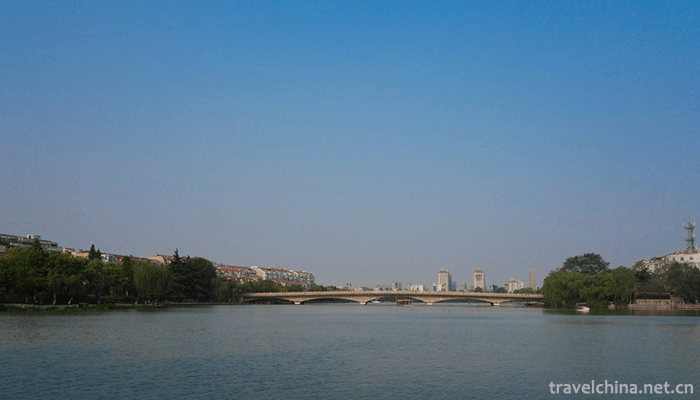
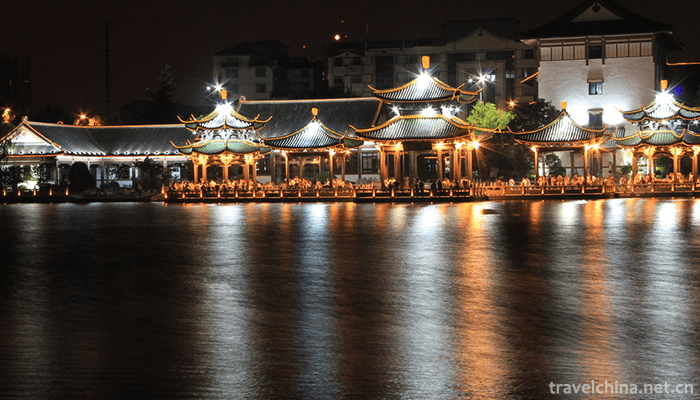
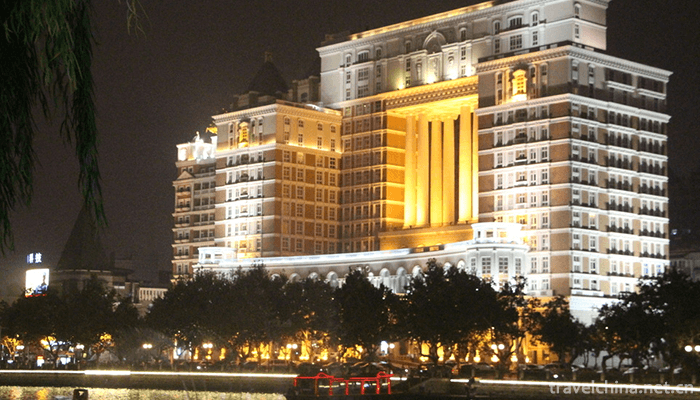
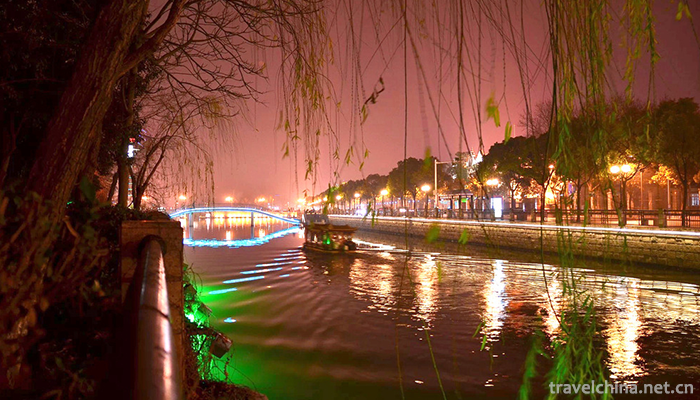
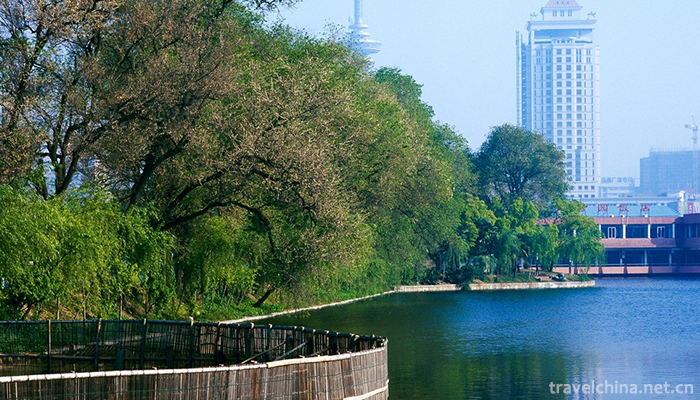
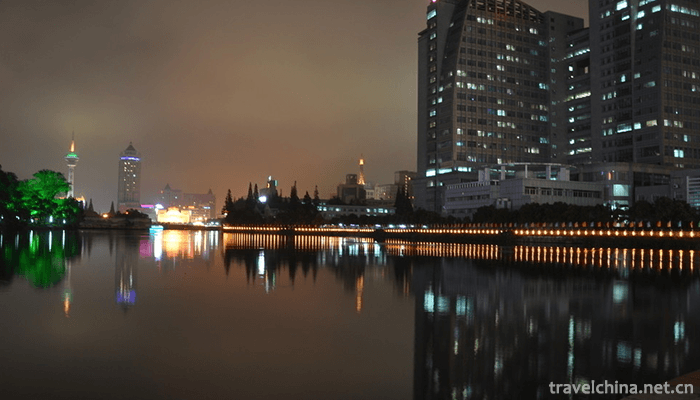
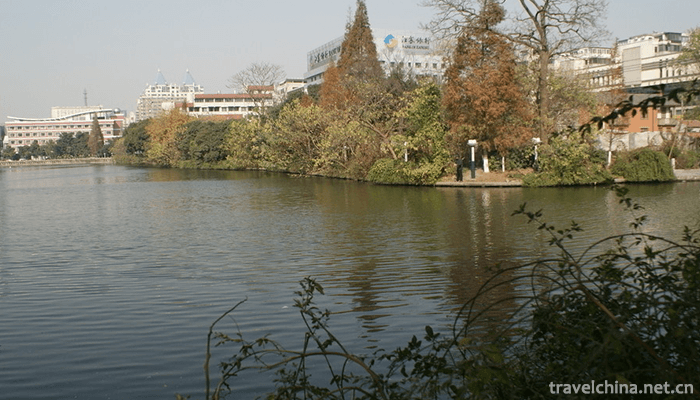
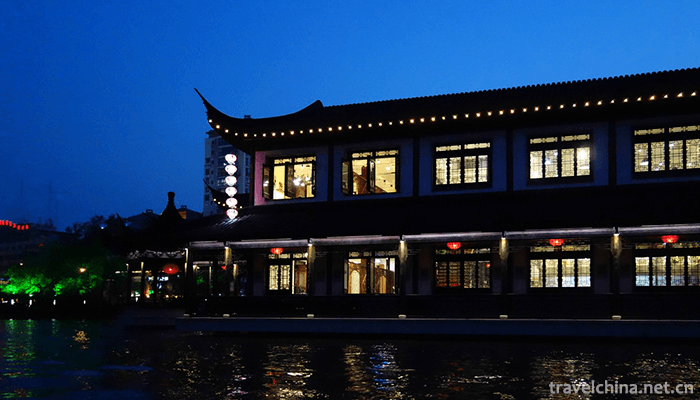
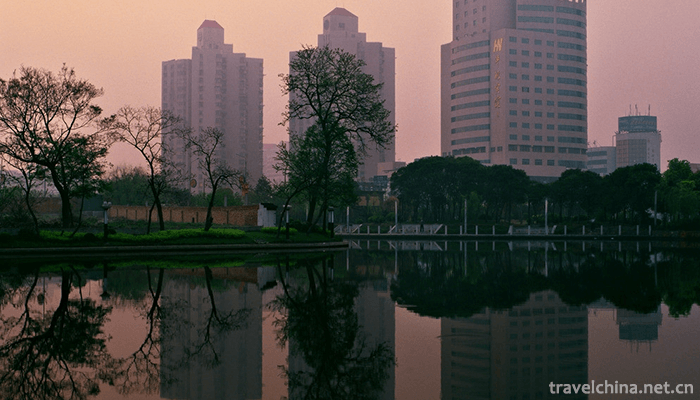


-
1.Letinous edodes chicken Noodles
Letinous edodes stewed chicken originated in Northern Jiangsu
Time 2018-10-12 -
2.Ming Ming Dynasty Tombs Scenic Area
Ming Tombs, World Cultural Heritage, National Key Cultural Relics Protection Units, National Key Scenic Spots, National AAAAA Tourist Scenic Spots.
Time 2018-11-24 -
3.Jizu Mountain Scenic Spot in Binchuan
Jizu Mountain is located in a cave-making area about 20 kilometers west of Binchuan County, Yunnan Province, 90 kilometers away from Dali City. It is named for its three peaks in the front and a ridge
Time 2019-01-03 -
4.Eyes of Tianjin
Tianjin Eye, full name Tianjin Yongle Bridge Tientsin Eye, crossing the Haihe River connecting Hebei and Hongqiao District, is a cross-river construction, bridge wheel in one Ferris wheel, both touris
Time 2019-02-21 -
5.Iron Man Wang Jinxi Memorial
The Iron Man Wang Jinxi Memorial Hall was built in 1971 to commemorate the pioneer fighter of the Chinese working class, the Iron Man Wang Jinxi. The Ironman Memorial Hall
Time 2019-02-22 -
6.Mongolian Chur
"Chuoer" is an ancient vertical wind instrument of Tuva people of Mongolian nationality in Xinjiang, which mainly distributes in Mongolian inhabited areas of Altay region. The Tuva people of
Time 2019-06-03 -
7.Qingyang Xiangbao embroidery
According to the pattern of paper-cut, various patterns are embroidered on the silk fabric with colorful thread, then different shapes are sewn, and the inner core is filled with silk, cotton and spic
Time 2019-06-11 -
8.The Lisu Knife and Rod Festival
The Lisu Knife and Rod Festival, which is called "A Tang De" in Lisu language, means "Climbing Dao Festival". It is a traditional festival of Lisu and Yi people living in Lushui Co
Time 2019-06-17 -
9.Zhang Jia Agui
Ah Kui (September 7, 1717 - October 10, 1797). Zhang Jiashi , word Guang Ting , Number Cloud cliffs Manchuria's blue flag people (after the war in Xinjiang were promoted to Zheng Bai Qi), a Bachelor o
Time 2019-09-11 -
10.Fobao scenic spot
Fobao scenic spot, located 128 kilometers southeast of Sichuan Province, is located in the southern edge of Sichuan Basin. It is a primeval forest area at the tail of the North vein of Dalou mountain. It covers an area of 380 square kilometers. It has the characteristics of mountain, water, stone and forest. It is a subtropical humid climate with superior natural conditions and well preserved vegetation.
Time 2020-10-16 -
11.Neijiang administrative division
Neijiang City governs 5 county-level administrative divisions (Municipal District 2, county-level city 1, county-2), and 83 township level administrative divisions (street 13, town 70). It covers an area of 5386 square kilometers and has a population of 4.27 million.
Time 2020-12-16 -
12.Honor of Neijiang City
On June 9, 2020, it was awarded the advanced municipal Party committee and government of Sichuan Province in promoting the development of service industry.
Time 2020-12-16